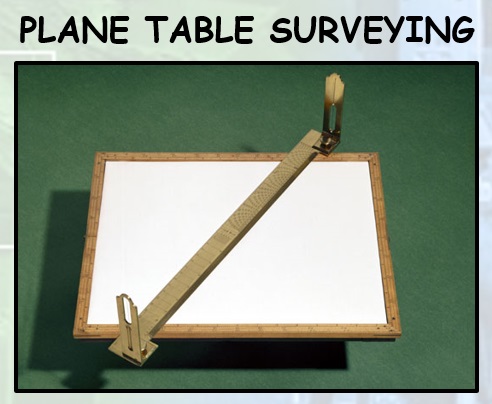Classification of Surveying: Primary and Secondary
PRIMARY CLASSIFICATION OF SURVEYING
PLANE SURVEYING
In plane surveying the curvature of Earth is not taken into consideration. The line joining any two points is considered straight. The triangle formed by joining any three points is considered to be plane and the angles of triangles are assumed to be plane angels. It is carried over area not exceeding 250 km2
GEODETIC SURVEYING
In this surveying the curvature of Earth is taken into consideration. The line joining any two points is considered as a curve. The triangle formed by joining any three points is considered to be spherical and the angles of triangles are assumed to be spherical angels. It is carried over an area exceeding 250 km2
SECONDARY CLASSIFICATION OF SURVEYING
BASED ON INSTRUMENT USED
1.Chain surveying
2.Compass traversing
3.Plane table surveying
4.Theodolite surveying
5.Tacheometric surveying
6.Photographic surveying
BASED ON METHOD OF SURVEYING
1.Triangulation surveying
2.Traverse surveying
BASED ON OBJECT OF SURVEYING
1.Geological surveying
2.Mine surveying
3.Archaeological surveying
4.Military surveying
BASED ON NATURE OF FIELD
1.Land surveying
i.Topographical surveying
ii.Cadastral surveying
iii.Engineering surveying
iv.City surveying
2.Marine surveying
3.Astronomical surveying
GENERAL PRINCIPLE OF SURVEYING
To work from whole to part
To locate a new station by at least two measurements (linear or angular) from a fixed reference point
TO WORK FROM WHOLE TO PART
-According to this principle, the whole area is first enclosed by main stations which are known as the control points .
-Between these station points are the main survey lines known as the control lines.
-High accuracy is required in forming the main station (control) points.
-The area is divided into a number of parts by forming well conditioned triangles.
-The main lines can be measured and then the sides of the triangles can also be measured.
-If there is any error in the measurements of the sides of the triangle, then it will not affect the whole work. Errors can be detected and removed at any stage during the process
TO LOCATE A NEW STATION BY AT LEAST TWO MEASUREMENTS (LINEAR OR ANGULAR) FROM A FIXED REFERENCE POINT
According to this principle, the new stations should always be fixed by at least two measurements (linear or angular) from fixed reference points.
-Linear measurements refer to horizontal distances measured by chains or tape.
-Angular measurements refer to the magnetic bearing or horizontal angle taken by a prismatic compass or theodolite.
Elementary Surveying in Civil Engineering
Classification of Surveying, Classification of Surveying, Classification of Surveying:



